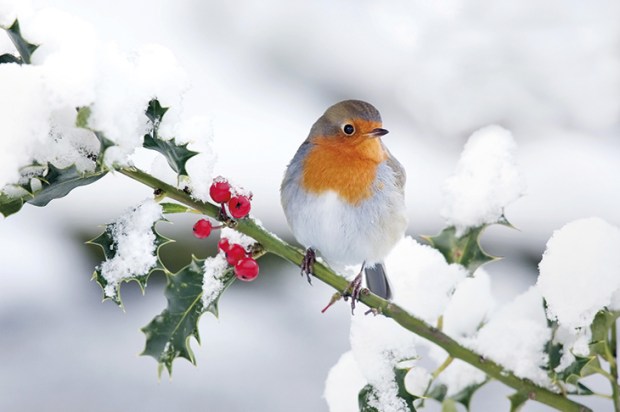The gin craze of recent years has reached a scale that would have horrified Hogarth. You can now buy strawberry, raspberry, rhubarb, blueberry and lime gins in supermarkets.
For me, though, there is only one flavoured variety worth bothering with: sloe gin. Where the rest are novelties, this is a staple dating back to the early 19th century.
Sloe gin is everywhere — Buckingham Palace even launched a line this year. But it is the easiest thing to make at home and there’s something very pleasurable about the ritual of doing so.
Folk wisdom suggests you should go foraging for sloes in the days after the first frosts — by which point they won’t ripen further but haven’t yet dried up — which means from mid-late October through November.
Though ‘foraging’ makes it sound like they are hard to find, sloes are almost as widespread as blackberries. They are the fruit of the blackthorn, Prunus spinosa. The distinct small white blossom appears from March to May — and sloe berries are everywhere in autumn. They are a deep blue-black colour with a pretty silver sheen. They are related to the plum but closer in size and appearance to a blueberry. When raw they are inedibly tart, but they become aromatic when steeped in gin.
I won’t give a detailed recipe: you really don’t need one. Just use roughly double the amount of berries to sugar and add enough gin to cover — and then a slosh more.
Some people suggest using a thorn from the shrub to prick each individual berry to let the flavour bleed out. But I can tell you from bitter experience that pricking is not only unnecessary but a fiddly, sticky nightmare. Instead, just freeze the sloes overnight so the skins crack. Then add gin — a generic London dry — and sugar. If you want to post about it on Instagram then maybe invest in an attractive Kilner jar. But otherwise you can use a recycled plastic lemonade bottle. Give it an occasional shake before straining and bottling after at least three months but ideally a year: you can start drinking your 2021 vintage while prepping your 2022. And so on, in perpetuity. Gin geeks will tell you it’s more complicated than this, adding all manner of complexities and upping the quality and cost of the gin used, but it really isn’t.
Sloe gin has recently become popular served as a fizz with some soda or prosecco. My personal favourite cocktail iteration is in a Spitfires Over Kent, where it’s shaken over ice with lemon juice, crème de violette and maraschino. But undoubtedly the classic way to drink it is straight from a hip flask on a cold winter day.
Got something to add? Join the discussion and comment below.
Get 10 issues for just $10
Subscribe to The Spectator Australia today for the next 10 magazine issues, plus full online access, for just $10.
You might disagree with half of it, but you’ll enjoy reading all of it. Try your first month for free, then just $2 a week for the remainder of your first year.














Comments
Don't miss out
Join the conversation with other Spectator Australia readers. Subscribe to leave a comment.
SUBSCRIBEAlready a subscriber? Log in